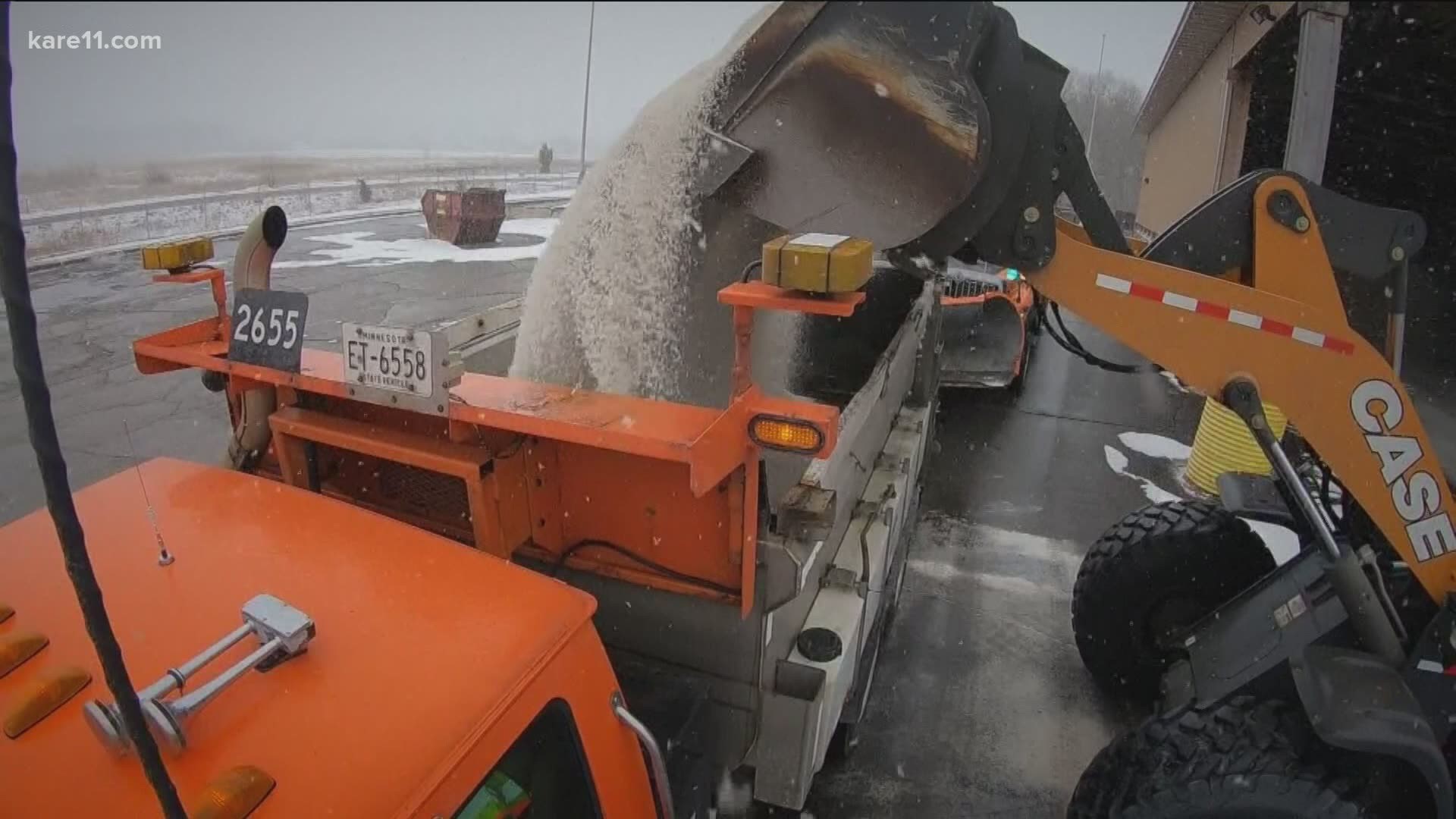MINNEAPOLIS — We've had a few snow events already this winter, but Anne Meyer with MnDOT says this one is different.
"Before we've had some warmer temperatures, and so the snow was heavier, it was thicker, it didn't move around as much. With the cold air that we're seeing here, this snow has a lighter consistency. It will be easier to blow back on the road,” Meyer explains.
Even though the snow has stopped, Meyer says the snow could blow back onto the roads over the next few days and keep causing problems.
Plus, in this cold weather the road salt doesn't work as well.
"We can add chemical additives that really lowers the freezing rate to help that salt to work a little bit better, but that too can only do so much. Nothing is a quick fix,” Meyer says.
You could teach a whole chemistry class about how road salt works.
The basics, however, are simple, salt lowers the freezing rate of water, and snow is simply frozen water.
So, the colder it is, the harder the salt has to work.
Cargill, one the world's largest road salt manufacturers, says at 30 degrees, one pound of salt can melt 46 pounds of ice.
However, at 20 degrees that same pound of salt can only melt 9-pounds of ice.
A ten degree drop and it's one-fifth as effective.
"It just slows down what we're able to do. It just takes longer for the salt and chemicals to be effective,” Meyer says.
So, don't be surprised if you see a few slick spots Friday morning or later this weekend.
Especially if you're in a rural community near farm fields where the snow can easily blow around and cover the roads again.
"It's so hard to know and each area can be different. That's why we encourage you to know before you go. Maybe there are some slicker conditions in your area. Just knowing that before you get behind the wheel can help you make some great travel decisions,” Meyer says.
MnDOT says road salt becomes less effective the colder it gets, here's why
Many communities across Minnesota only saw a few inches of snow, but MnDOT says with the wind and the cold, slippery road conditions could stick around for days.

